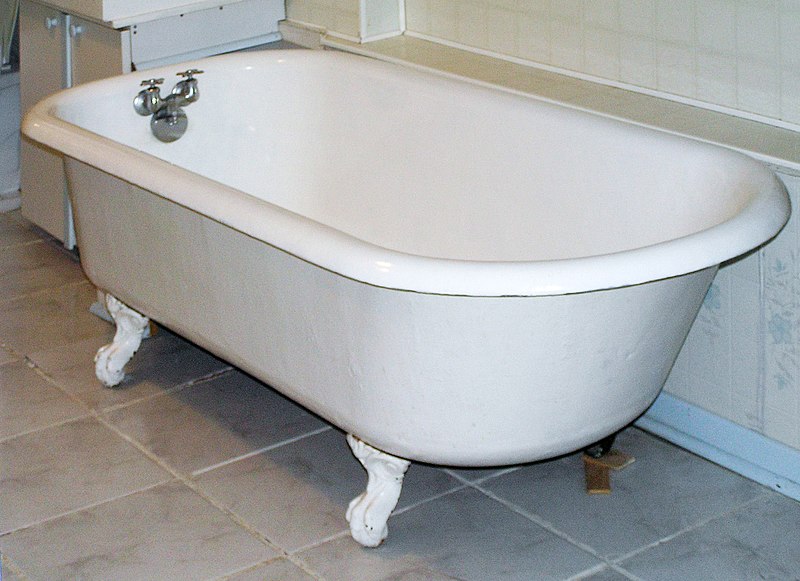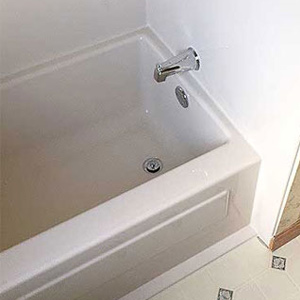Just How to Install a Bathtub in Your Bathroom
Just How to Install a Bathtub in Your Bathroom
Blog Article
Just about everyone will have their personal way of thinking in relation to Installing A Bathtub.

Setting up a bath tub isn't precisely brain surgery, yet it does require strong plumbing, woodworking, and often, tiling skills. Replacing an old bath tub with a new one is additionally a moderately tough job. If the old bathtub is readily easily accessible, the project can move rapidly; if you need to open up a wall to get rid of the old tub as well as place the brand-new bathtub, the job is a lot harder. In either case, the project is within a house handyman's abilities, although you will need a helper to move out the old tub as well as embeded in the new one. Ensure you have certified on your own for the work and are comfortable trying it. As opposed to hiring a professional to take over a halfway-completed job, it is far better to think about utilizing one prior to you start. Chances are you may need an expert plumber to make tube connections.
This post will help you install a new tub in your shower room if you have currently gotten a brand-new bathtub and also do not require to transform the arrangement of your previous water supply pipes.
Your tools and product list need to comprise the following:
Removing Old Touches
If you need to replace old taps with new ones as a part of your installation, after that the first thing you need to do is disconnect the supply of water. After doing so, switch on the taps to drain pipes any type of water staying in the system. The process of getting rid of the existing taps can be fairly bothersome due to the restricted gain access to that is typically the case.
Utilize a basin wrench (crowsfoot spanner) or a tap tool to reverse the nut that connects the supply pipes to the taps. Have a towel all set for the staying water that will come from the pipes. As soon as the supply pipes have been eliminated, utilize the same tool to loosen up the nut that holds the faucets onto the bath/basin. You will certainly require to quit the single taps from transforming throughout this process. When the taps have actually been removed, the holes in the bath/basin will have to be cleaned up of any old securing substance.
Before moving on to fit the new faucets, contrast the pipeline links on the old taps to the new faucets. If the old faucets are longer than the brand-new faucets, after that a shank adapter is required for the new taps to fit.
Fitting New Taps
If the tails of the new faucets are plastic, then you will certainly require a plastic adapter to prevent damage to the string. One end of the adapter fits on the plastic tail of the tap and the other end provides a connection to the existing supply pipelines.
If you require to fit a monobloc, then you will need reducing couplers, which attaches the 10mm pipeline of the monobloc to the common 15mm supply pipeline.
Next off, position the faucet in the mounting opening in the bath/basin ensuring that the washing machines are in location in between the faucet and the sink. Protect the faucet in position with the maker offered backnut. As soon as the tap is firmly in place, the supply pipelines can be linked to the tails of the faucets. The faucets can either be connected by utilizing corrugated copper piping or with regular tap adapters. The former kind must be connected to the tap finishes first, tightening up only by hand. The supply pipelines can later be linked to the other end. Tighten up both ends with a spanner after both ends have been linked.
Installing the Tub
Making use of both wooden boards under its feet, position the bathtub in the needed placement. The wood boards are practical in equally spreading the weight of the tub over the area of the boards as opposed to concentrating all the weight onto four small points.
The following objective is to make sure that the bath tub is leveled all round. This can be achieved by checking the level and also readjusting the feet on the bathtub until the spirit level checks out degree.
To set up faucets, fit all-time low of the outermost flexible tap port to the suitable supply pipe by making a compression join; after that do the same for the various other tap.
Activate the supply of water and also examine all joints and also brand-new pipework for leakages and also tighten them if essential. Fill the bathtub and likewise inspect the overflow outlet as well as the normal outlet for leakages.
Finally, fix the bath paneling as described in the supplier's user's manual. Tiling and securing around the bath tub should wait until the bathtub has been used a minimum of when as this will settle it into its final position.
Getting ready for the Installment
First of all, the sustaining framework supplied with the bathroom should be fitted (if called for) according to the manufacturer's instructions. Next, fit the taps or mixer to the bathtub. When fitting the faucet block, it is necessary to make sure that if the tap features a plastic washing machine, it is fitted between the bathroom and the faucets. On a plastic bathroom, it is likewise sensible to fit a supporting plate under the faucets device to stop strain on the bathtub.
Fit the adaptable faucet connectors to the bottom of both faucets making use of 2 nuts as well as olives (in some cases supplied with the bathtub). Fit the plug-hole outlet by smearing mastic filler round the sink outlet opening, and then pass the outlet through the hole in the bath. Utilize the nut supplied by the supplier to fit the plug-hole. Examine the plug-hole electrical outlet for an inlet on the side for the overflow pipe.
Next, fit the end of the flexible overflow pipeline to the overflow outlet. After that, screw the pipeline to the overflow face which must be fitted inside the bath. Ensure you make use of all of the provided washing machines.
Connect the trap to the bottom of the waste electrical outlet on the tub by winding the thread of the waste outlet with silicone mastic or PTFE tape, and screw on the trap to the electrical outlet. Link the bottom of the overflow tube in a comparable manner.The bathroom should currently prepare to be suited its last placement.
Tiling Around the Bathtub
In the area where the bath satisfies the tile, it is essential to seal the accompanies a silicone rubber caulking. This is very important as the fitting can move enough to split an inflexible seal, triggering the water to pass through the wall surface between the bathroom as well as the tiling, resulting in problems with wetness as well as possible leakages to the ceiling listed below.
You can pick from a range of coloured sealants to blend in your components as well as fittings. They are marketed in tubes as well as cartridges, and also can securing gaps as much as a size of 3mm (1/8 inch). If you have a larger space to load, you can load it with twists of soaked paper or soft rope. Keep in mind to constantly fill the tub with water prior to sealing, to permit the movement experienced when the tub remains in usage. The sealer can fracture fairly early if you do not think about this activity before securing.
Conversely, ceramic coving or quadrant floor tiles can be utilized to border the bath or shower tray. Plastic strips of coving, which are easy to use as well as cut to dimension, are also easily offered on the market. It is suggested to fit the ceramic tiles making use of waterproof or water resistant glue as well as grout.
Bathtub Installation
How Important Is A Bathtub To Your Home?
High-quality baths, showers, and other bathroom updates are necessary when considering a smart investment in your home. It’s a room that you go to every day and one that is constantly being used by guests.The bathroom is one of the top trafficked rooms in a home and also one of the most valuable in terms of home resale.
Install Piping Before Tub
You will be using your existing drain and waste vent system, but pipes required include the hot and cold water supply lines and a pipe leading to a shower head. A mixing valve and shower head are also needed. Air chambers may be required.
Position the Tub
Lower the tub into place so that the continuous flange fits against the wall studs and rests on 1’x4' or 2’x4' supports. Anchor the tub to the enclosure with nails or screws inserted through the flanges into the studs.
NOTE: Remember, bathtubs and shower stalls may require support framing. A bathtub filled with water is extremely heavy, so check building codes and framing support before installing the tub.
Assemble Drain Connections
Assemble the bathtub drain connections by connecting the tub overflow with the tub drain above the trap, not beyond it. The trap will have a compression fitting that screws over the arm of the overflow assembly.
Place a Pipe For the Shower Head
First, locate a brass female threaded winged fitting and attach it to a framing support via a screw or a nail. Then run a pipe up the wall for the shower head. Sweat or solder the other side of the brass fitting to the top of the pipe.
Attaching Hot and Cold Water Lines
Attach your water lines for both hot and cold by sweating these directly into the hot and cold ports of the mixing valve. The mixing valve will be how water enters the tub’s system, not by the pipes themselves.
Install the Spout
Extend a piece of 1/2 inch pipe, or whichever length is specified in the manufacturer’s instructions, for the tub spout. Sweat on a male threaded fitting at the end of the pipe or use a brass nipple of the proper length and a 1/2 inch cap.
NOTE: At this point you should have your rough-in plumbing work inspected before proceeding further.
Check For Leaks
Restore the water pressure and check the drain connection and the supply pipes for any sign of leaking.
estore the Bathroom Wall
Replace the wall with moisture-resistant drywall as a base for your wall covering. Seal the joints between the wall and your new tub with silicone caulk as protection against water seepage.
https://www.berkeys.com/2016/12/02/bathtub-installation-dallas/

I am very excited about How to Install a Bathtub and I am praying you enjoyed reading the piece. Sharing is good. You never know, you may just be helping someone out. I truly appreciate reading our article about Installing A Bathtub.
Schedule Now Report this page